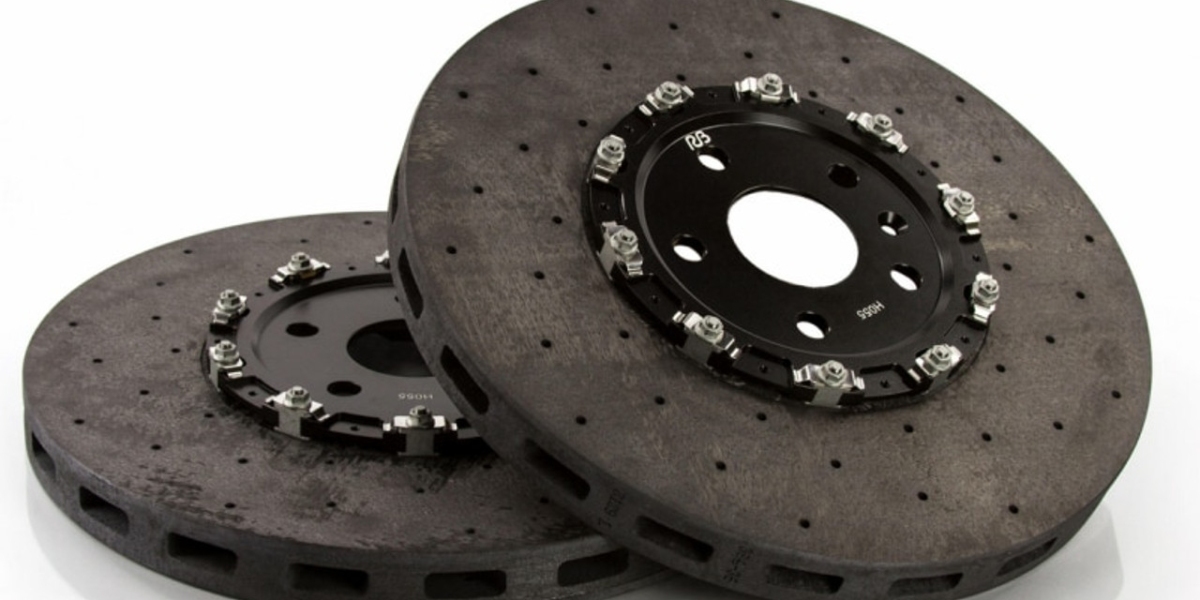They are increasingly being used in high-performance and luxury vehicles for their superior braking power and lighter weight compared to regular cast iron brakes. The ceramic material provides improved thermal conductivity which helps the brakes run cooler and last longer than traditional brake materials.
Working Mechanism of Carbon Ceramic Brakes
Carbon ceramic brakes work on the same basic principles as ordinary brake systems but use advanced materials to improve performance. When the brake pedal is pressed, hydraulic pressure pushes the brake pads against the rotors to create friction and slow the wheels down. In carbon ceramic brakes, the rotors are made of a carbon-fiber reinforced ceramic silicon carbide composite instead of cast iron. This makes the rotors significantly harder and with a higher melting point than steel. They are also approximately 30% lighter than traditional cast iron rotors. The greater hardness and heat tolerance allows carbon ceramic brakes to handle high speeds and heavy braking loads without fading or warping.
Advantages of Carbon Ceramic Brakes
Some key advantages of using carbon ceramic brakes include:
- Improved braking power - Automotive Carbon Ceramic Brakes can bring vehicles to a stop from high speeds much quicker than ordinary brakes due to the increased hardness and heat tolerance of the materials.
- Less brake dust - Ceramic brake rotors produce minimal brake dust since they don't corrode or shed material like iron rotors when heated up from braking. This keeps the wheels cleaner.
- Reduced brake weight - Weighing approximately 30% lesser than steel makes carbon ceramic brakes very lightweight which improves overall vehicle performance and handling.
- Cooler running - Ceramic conducts heat much faster than cast iron so the brakes do not overheat easily even after aggressive braking, maintaining braking feel.
- Increased durability - Due to the high melting point and hardness of ceramics, carbon ceramic brakes last significantly longer than ordinary brakes with minimum wear over the life of the vehicle.
Applications in Luxury and High-Performance Vehicles
The superior characteristics of carbon ceramic brakes have made them a popular choice for high-end luxury cars and sports cars that require premium braking abilities and reliability. Some vehicles that use carbon ceramic brakes include premium models from Ferrari, Lamborghini, McLaren, Porsche, BMW, Mercedes, and other luxury brands. They provide enhanced track performance for race-derived models. Carbon ceramics are also being introduced on some non-luxury high-performance vehicles like the Dodge Viper and Chevrolet Corvette. With the technology becoming increasingly affordable, more mainstream automakers may adopt carbon ceramic brakes across more vehicle segments in the future.
Potential Challenges of Carbon Ceramic Brakes
While carbon ceramic brakes perform far better than conventional brakes, some challenges that still need to be addressed include:
- Higher initial cost - Production of carbon ceramic parts requires expensive materials and processes which make the brakes significantly more costly than steel, limiting their application.
- Noise concerns - The hardness of ceramic rotors means they may be more prone to squealing and vibrations under light braking than iron, though manufacturers are working to reduce this.
- Susceptibility to cracks - Extreme braking from accidents can potentially cause cracks to form in ceramic rotors, rendering them unsafe until replacement. Ongoing R&D is evaluating strategies to enhance impact resistance without compromising performance.
Carbon ceramic brakes showcase the potential of advanced materials to drastically improve braking performance in automotive applications. As the technology matures further and costs reduce, they will likely replace conventional brakes across more premium vehicle segments. Continuous engineering efforts aim to maximize the strengths of ceramic composites while overcoming present obstacles like hardness-related noise. Carbon ceramic brakes therefore represent the future of braking systems for high-end cars seeking cutting-edge stopping power and reliability.
Get more insights on This Topic- Automotive Carbon Ceramic Brakes
Explore More Articles – Phishing Simulator Market









